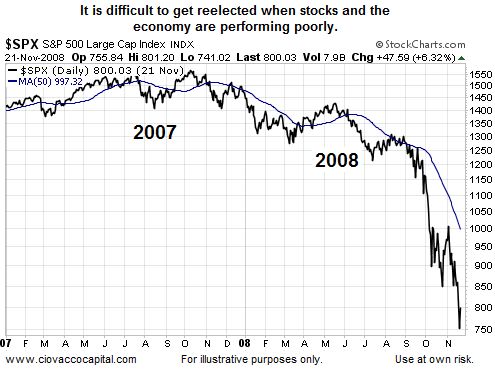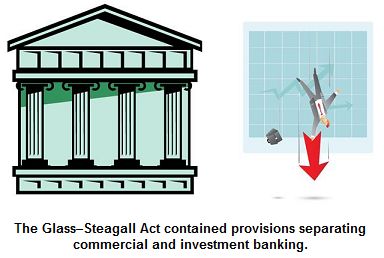And Where We are Going?
Policy Makers- Blowing Bubbles Again
 Many hard-working Americans are scratching their collective heads about the following questions:
Many hard-working Americans are scratching their collective heads about the following questions:
- Why have stocks performed in a manner that seems to be out of step with the relatively slow pace of economic expansion?
- Why has the economic recovery failed to gain traction, even though the peak of the financial crisis occurred almost six years ago?
- Are policymakers inflating bubbles again?
- Will the markets revert back to the bust portion of the boom-and-bust cycle we have been in since 1997?
Learning From Nixon’s Wage And Price Controls
If you believe in the free enterprise system and its ability to efficiently allocate productive resources, the blurb below falls in the “I can’t believe they did that” category. From the Cato Institute:
Remember “TARP,” “Too Big to Fail,” “Government Motors,” “pay czar,” the buzzwords of the Bush-Obama era? They reflected a disturbing trend toward presidential interference in economic life. Forty years ago this week, President Richard Nixon showed us just how dangerous unchecked executive power can be to the free-enterprise system. On Aug. 15, 1971, in a nationally televised address, Nixon announced, “I am today ordering a freeze on all prices and wages throughout the United States.” After a 90-day freeze, increases would have to be approved by a “Pay Board” and a “Price Commission,” with an eye toward eventually lifting controls — conveniently, after the 1972 election.
Unfortunately, many political decisions and government acts are designed to help those in power stay in power. To stay in power, you have to get reelected. Notice how Nixon’s actions came prior to the 1972 election.
Choice Made To Focus On The Short-Term
When the S&P 500 was plummeting in the second half of 2008, policymakers had some tough decisions to make:
Option A: Let the financial crisis run its course and allow:
- Bad debts to be purged from the system via defaults, and
- Asset prices to find their true bottom based on supply and demand.
Option B: Try to stem market and economic declines with a focus on reducing short-term pain rather than what is best for the economy in the long run.
In 2008, the cries of “we have to do something or we will get killed in the next election” were much louder than the pleas of “let’s not make the same mistakes again”. Policymakers around the globe, including the Fed and U.S. government, decided to intervene in the markets in a manner that had not been seen in quite some time.
Can You Imagine Where We Would Be Today?
Assume policymakers decided in 2008 to focus on the long-term and allowed the laws of supply and demand to determine (a) the true value of stocks and real estate, and (b) how to best allocate scarce resources. An argument can be made that under that scenario:
- The economic pain and job losses would have been far worse between 2009 and 2010.
- However, when stocks and real estate dropped to natural and reasonably priced levels, idle investment capital would have stepped in and started making productive and more sustainable investments in our long-term economic future.
- Once weak players and bad debts had been purged from the system, in an admittedly painful process, the economy would have started to grow at much higher and sustainable rates in 2011, 2012, and 2013. In 2014, unemployment would be lower than it is today and GDP gains would be much higher.
If you are thinking “the laws of supply and demand and the free markets got us into the 2008 financial crisis in the first place”, keep in mind government intervention into the financial and housing markets skewed the free market and allowed asset bubbles to form. The markets were not free between 2002 and 2007 when government subsidies of all kinds were in place.
Intervention Creates Pricing And Allocation Distortions
The text below from the International Institute for Sustainable Development (IISD) highlights one of the primary causes of asset bubbles and economic distortions:
Critics often point to the economic distortions created by subsidies, especially subsidies that are used to promote specific sectors or industries. Generally, such subsidies tend to divert resources from more productive to less productive uses, thus reducing economic efficiency.
Government Intervention Helped Inflate Housing Bubble
Between 2002 and 2008 numerous forms of government intervention and subsidies helped distort two industries, housing and financial services. The list below contains a few of the more relevant forms of intervention:
- Repeal of the Glass-Steagall Act
- Government guarantees of mortgage loans
- The Federal Reserve kept interest rates too low for too long.
Déjà Vu All Over Again?
Over the last five years, we have all heard “historic lows” and interest rates used in the same sentence countless times. Low interest rates help subsidize industries, such as housing, that benefit during times of favorable borrowing conditions. Concerns about artificially inflated housing prices have resurfaced again in 2014. From Yahoo:
“It’s definitely a mixed bag of news,” says Humphries in the video above. “On the one hand you’re happy that home prices are recovering so nicely. On the other hand home values were definitely overvalued in 2006 and the fact that just so shortly after the greatest housing recession of the century we’re already seeing a lot of metros return to their peak levels is a sign for how robust the recovery is…but some markets are definitely in danger of overheating again.”
Low Rates And QE Have Juiced Stocks Again
In addition to flooding the system with greenbacks, low interest rates distort financial markets by forcing investors to gravitate toward riskier assets in search of returns. If you want to understand how quantitative easing (QE) alters the investment landscape, viewing this 2010 video will do the trick. Just as low rates helped push stock prices higher between 2002 and 2007, the Fed has been running their bubble-blowing machine almost non-stop over the past five years with an undeniable impact on stock prices.
Debt Was Never Purged From System
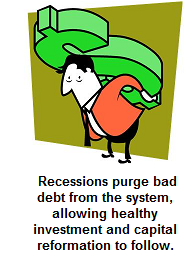
Government intervention (2008-2014) has allowed excessive debt to remain in the global financial system, which continues to act as a drain on systemic and economic confidence. The lingering debt has negatively impacted the strength of the current expansion. The text from The Guardian below was published on April 9, 2014, meaning debt-related problems are alive and well:
The eurozone’s creaking banking system poses a serious threat to global financial stability, according to the International Monetary Fund, which warned European leaders to accelerate plans to support weak banks and create a banking union.
Concerned Capital Has Remained On Sidelines
If you believe…
- Asset prices never reached their natural lows in 2008-2009.
- Asset prices are still being artificiality inflated with QE and low interest rates.
- Excessive debt still threatens the stability of the global financial system.
…then, it is difficult to make long-term investments in real estate, stocks, factories, new employees, etc. Government intervention helped create the three bullet points above. Those same bullet points have contributed to the current and tepid global economic recovery.
Skewed And Propped Up Markets Carry Higher Risk
Economic cycles commonly feature booms and busts. A common misconception for new investors is that we have never seen anything like this before. Policymakers and central bankers have been intervening in markets long before most of us were born, and they will still be doing it after we are dead. A bigger and more concerning misconception is “the Fed can always bail out the markets.” If that were true, why did the Fed allow the S&P 500 to drop over 50% in both 2000-2002 and 2007-2009. It is not a question of if the next bust is coming, but when.
Bubbles Can Last Longer Than Rational People Think
What happens if asset prices rise for another three years? If that sounds insane, keep in mind many were shocked the housing bubble remained intact as prices continued to rise into 2006. You may counter with “there is no way stocks can rise for three more years given their already stretched valuations.” Using valuations as a market timing mechanism is questionable at best. For example, stock valuations were already stretched in the 1990s and talk of bubbles was common (sound familiar?). As shown in the chart below, with a PE of 90, the NASDAQ gained an additional 134% from January 1, 1999 to the euphoric peak in March 2000. With a stretched PE of 32, the S&P 500 gained an additional 26%.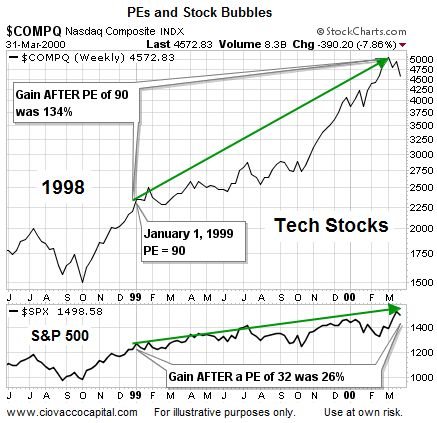
Investment Implications: Preparing For Bubbles And Bears
The objective of this article is to highlight (a) the importance of having a game plan for both bull and bear markets, (b) increased risks caused by artificially inflated asset prices, and (c) lingering concerns about excessive debt. There are many prudent ways to prepare for a bubble that lasts three more years or an imminent “pop”. Regardless of the approach, they all involve studying markets, building a risk-management system, backtesting the system, developing rules, and following the rules 100% of the time. If you are new to these concepts, the articles below provide simple examples of systems and risk-management strategies:
- You Need A Plan For Next Inevitable Bear Market
- Stock Bubbles: Can Investors Profit While Monitoring Risk?
- 2007/2013: You Will Never Look At The Markets The Same Way Again
- Tired Of Missing Rallies? 4 Ways To Improve Your Game
- Concerned About Being Underinvested? You Should Be
Markets Still Responding To Fed
One telltale sign the current bubble-blowing cycle is nearing its inevitable end will be when stocks fail to respond to Fed pep talks. Recent market action says we are not there yet. Technology stocks (QQQ) were on the ropes before Fed Chairwoman Janet Yellen delivered some reassuring words last week. From San Francisco Gate:
Federal Reserve Chair Janet Yellen said [last] Wednesday that the U.S. job market still needs help from the Fed and that the central bank must remain intent on adjusting its policy to respond to unforeseen challenges. Yellen’s speech Wednesday and her answers to questions afterward served to confirm investors’ view that the new Fed chair is firmly in the camp of “doves”— officials who are more concerned about high unemployment than about the threat of future high inflation.
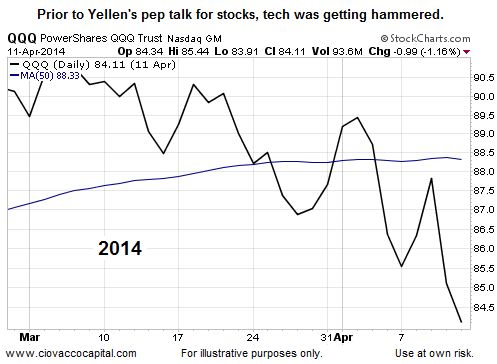
Consequently, we continue to maintain a mix of stocks (SPY), bonds (TLT), and cash. The recent observable improvement in the market’s tolerance for risk allowed our market model to call for an increased exposure to stocks along with a reduction in cash. While things have improved for equities over the last five sessions, enough concerns remain, including artificially inflated asset prices, to maintain a flexible stance paired with an open mind.
Elections Are Always Just Around The Corner
Will the Fed decide to shut down the bubble-blowing machine? It is not likely for two primary reasons:
- Midterm elections are right around the corner with a Presidential election soon thereafter.
- No one, including Janet Yellen, wants a crisis to occur on their watch.
Government Has Helped Skew Tuition Costs
The impact of subsidies is not limited to housing and stocks. It is easy to find examples in all walks of life. Common economic sense tells us that cheap and accessible mortgages increased the demand for housing and help drive prices higher. The same logic can be applied to the availability of loans for college. From the Cato Institute:
One result of the federal government’s student financial aid programs is higher tuition costs at our nation’s colleges and universities. Basic economic theory suggests that the increased demand for higher education generated by HEA will have the effect of increasing tuitions. The empirical evidence is consistent with that—federal loans, Pell grants, and other assistance programs result in higher tuition for students at our nation’s colleges and universities.
The more recent form of intervention has come in the form of “forgiving” a portion of education loans. This program, like many others, has unintended and negative consequences. From The Wall Street Journal:
The Obama administration has proposed in its latest budget released last month to cap debt eligible for forgiveness at $57,500 per student. There is currently no limit on such debt. The move reflects concerns in the administration not just about the hit to the government, but over the risk that promising huge debt forgiveness could make borrowers and schools less disciplined about costs. Colleges might charge more than they would otherwise, leading students to borrow more. Federal data show tuition and fees are up more than 6% a year on average in the past decade, more than 2 1/2 times inflation.
Copyright © 2014 Ciovacco Capital Management, LLC. All Rights Reserved. Chris Ciovacco is the Chief Investment Officer for Ciovacco Capital Management, LLC (CCM).
Reprinted by Permission. See Original Article for Terms of Use.

